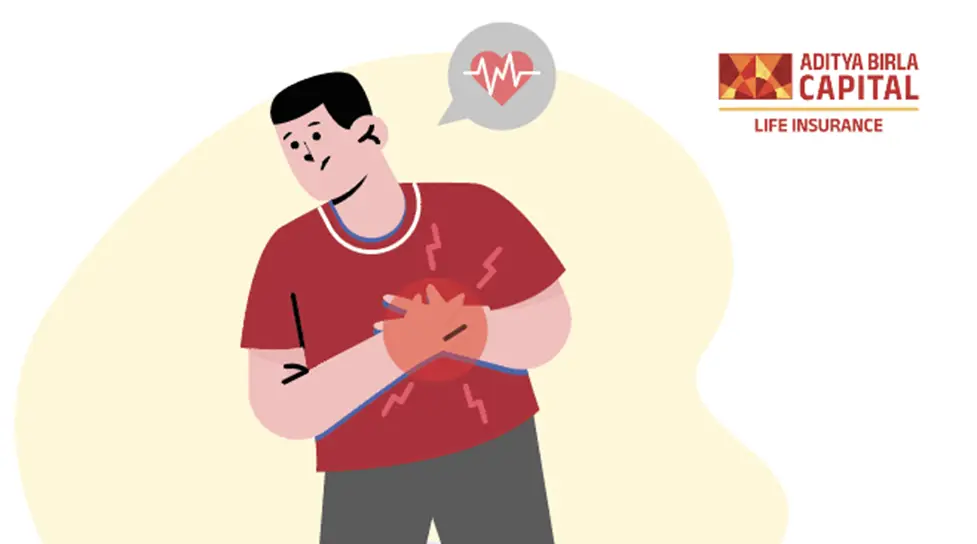Breast cancer is a serious health issue that affects both women and men, regardless of age or life stage. Did you know women can be susceptible to breast cancer even when they’re pregnant?
Even though relatively rare, it is still possible for breast cancer to occur during pregnancy. According to the study by National Library of Medicine2, around 1 in 3000 expecting mother contract breast cancer. It is essential for expectant mothers and those currently breastfeeding to be aware of the signs and symptoms of breast cancer along with the available treatment options to deal with this menace effectively.
In this article, we’ll have a look at what breast cancer is, breast cancer during pregnancy symptoms, and more.
What Is Breast Cancer?
Breast cancer is a type of cancer that begins in the breast tissue. It occurs when cells in the breast start to grow and divide uncontrollably, forming a mass of tissue known as a tumour. Breast cancer can have serious implications if left untreated. It has the potential to invade and grow into the tissues surrounding the breast, as well as spread to other parts of the body, leading to the formation of new tumours. This process is known as metastasis.
Signs Of Breast Cancer
It is important to be aware of the signs and symptoms of breast cancer to detect it early and seek appropriate medical attention -
- A change in the size, shape, or contour of your breast can sometimes be an indicator of breast cancer.
- The presence of a mass or lump in the breast. These masses or lumps can vary in size, from small as a pea to larger sizes.
- A lump or thickening in or near your breast or underarm area. If you notice a persistent lump that doesn't go away throughout your menstrual cycle, it may be a cause for concern.
- A noticeable alteration in the appearance or texture of the skin on your breast or nipple, such as dimpling, puckering, scaliness, or inflammation.
- Presence of redness on the skin of your breast or nipple.
- The presence of an area that is visibly and distinctly different from the surrounding tissue in either breast.
- The presence of a firm, marble-like area beneath the skin.
- The presence of a discharge from the nipple. This discharge can range in colour and consistency, with a blood-stained or clear fluid.
Can Breast Cancer Happen To Someone Pregnant?
Breast cancer can indeed occur in women who are pregnant or have recently given birth. Detecting breast cancer during pregnancy can be challenging due to the natural changes that happen in the breasts during this time. Pregnancy often leads to an increase in breast size, tenderness, and lumpiness. These changes are a result of hormonal fluctuations that are normal during pregnancy and breastfeeding. As a result, it can be more difficult to detect small lumps or abnormalities that may indicate breast cancer.
Breast Cancer Treatment During Pregnancy
The size of the tumour, its location, and the stage of pregnancy all play a role in determining the appropriate cancer treatment options. Let us have a look at some of the possible treatments -
Surgery
When it comes to treating early-stage breast cancer in pregnant women, surgery is typically the initial course of action. The good news is that surgery can be safely performed during pregnancy with minimal as well as to no risk to the unborn child. Your medical team will likely proceed by removing the lump through a lumpectomy or mastectomy procedure. In some cases, they may also remove lymph nodes from under the arm.
Chemotherapy
Chemotherapy is a treatment option that may be considered for pregnant cancer patients depending on the type of cancer and the stage of pregnancy. It is important to note that there are specific time spans during pregnancy that are considered safe for receiving chemotherapy without causing harm to the baby.
Radiation
While radiation can be beneficial for various medical purposes, it is important to exercise caution, especially when it comes to the health and safety of the unborn baby. If any medical procedure involving radiation is recommended, it is generally advised to wait until after the baby is born.
Hormone Therapy
Due to the limited knowledge regarding the impact of hormone therapy on foetal development, healthcare professionals exercise caution when considering its use during pregnancy. As a result, in most cases, hormone therapy is typically prescribed and used only after the baby is born.
When it comes to cancer and pregnancy, it is important to understand that the cancer itself does not directly spread to or harm the unborn child. However, the treatment plan chosen for the mother's cancer may sometimes pose a risk to them.
Signs Of Breast Cancer While Breastfeeding
Here are some important things you should check and keep track of when you’re breastfeeding -
Mastitis Symptoms
Breastfeeding should be a joyful experience, but sometimes infections like mastitis (an inflammation of the breast tissue) can occur, causing discomfort and worry. A blocked milk duct or bacteria can lead to mastitis, typically within the first three months of breastfeeding. Recognising the key signs such as breast tenderness, swelling, pain, and fever early on can be helpful.
Invasive Ductal Carcinoma (IDC) Symptoms
Being the most prevalent form of breast cancer, IDC can be concerning for nursing mothers. It accounts for almost 80% of all breast cancer cases2. The potential symptoms could be a rash or redness, breast swelling, and persistent pain.
An Unusual Discharge
It is important not to ignore any unusual discharge during breastfeeding. While a watery or milky discharge is normal, an excessive discharge that persists for an extended period of time can be a cause for concern. If you are experiencing this, it is recommended that you consult your doctor without delay.
Swelling of the Breast
Breast swelling is a common occurrence in the early months of motherhood due to an excess milk supply. This engorgement typically subsides as your baby establishes a feeding routine and your body adjusts to producing milk according to their needs. However, if you notice any unusual swelling in all or part of your breasts, it is important to pay attention to it.
Bumps and Lumps
It is crucial to pay close attention to any small changes that occur in your body. While some experts suggest that any hard masses that are painless should be examined, it is equally important to have professionals evaluate any lumps or bumps that do not move. By being vigilant, you can better understand the signals your body may be sending you.
What Causes Lumps In Lactating Women?
Breast lumps in lactating women can be caused by various factors related to breastfeeding. It's important to note that in most cases, these lumps are not cancerous.
Here are some possible reasons for the development of breast lumps in breastfeeding women -
• Infection
Lumps in lactating women can be caused by various factors, including infections. An infection of the breast tissue can occur due to bacteria entering the breast through a cracked or sore nipple or a blocked milk duct.
• Breast Abscesses
Breast abscesses can occur in lactating women as a result of untreated mastitis. It typically appears as a swollen lump that is red and hot to the touch.
• Fibroadenomas
Fibroadenomas cause lumps in lactating women and are generally noncancerous and harmless. When you touch them, they may feel like marbles under the skin. One characteristic of fibroadenomas is that they usually move easily under the skin.
• Galactoceles
Galactoceles are milk-filled cysts that are generally harmless and painless. These cysts feel smooth and round, and they can move within the breast. It's important to note that galactoceles are noncancerous.
Wrapping Up!
Breast cancer can indeed occur in pregnant women, making it essential for pregnant women who notice any concerning changes in their breasts and body to promptly consult with their healthcare provider. Regular self-examinations and clinical screenings remain crucial for early detection and improved outcomes. By staying informed about breast cancer risks during pregnancy and seeking appropriate medical attention when needed, you can take proactive steps towards maintaining your health and well-being.
Sources:
2https://www.ncbi.nlm.nih.gov/pmc/articles/PMC6888785/
4https://www.bcna.org.au/understanding-breast-cancer/what-is-breast-cancer/types-of-breast-cancer/#:~:text=Invasive%20ductal%20carcinoma%20(IDC)%20is%20the%20most%20common%20type%20of%20breast%20cancer.%20About%2080%25%20of%20all%20breast%20cancers%20are%20invasive%20ductal%20carcinomas










